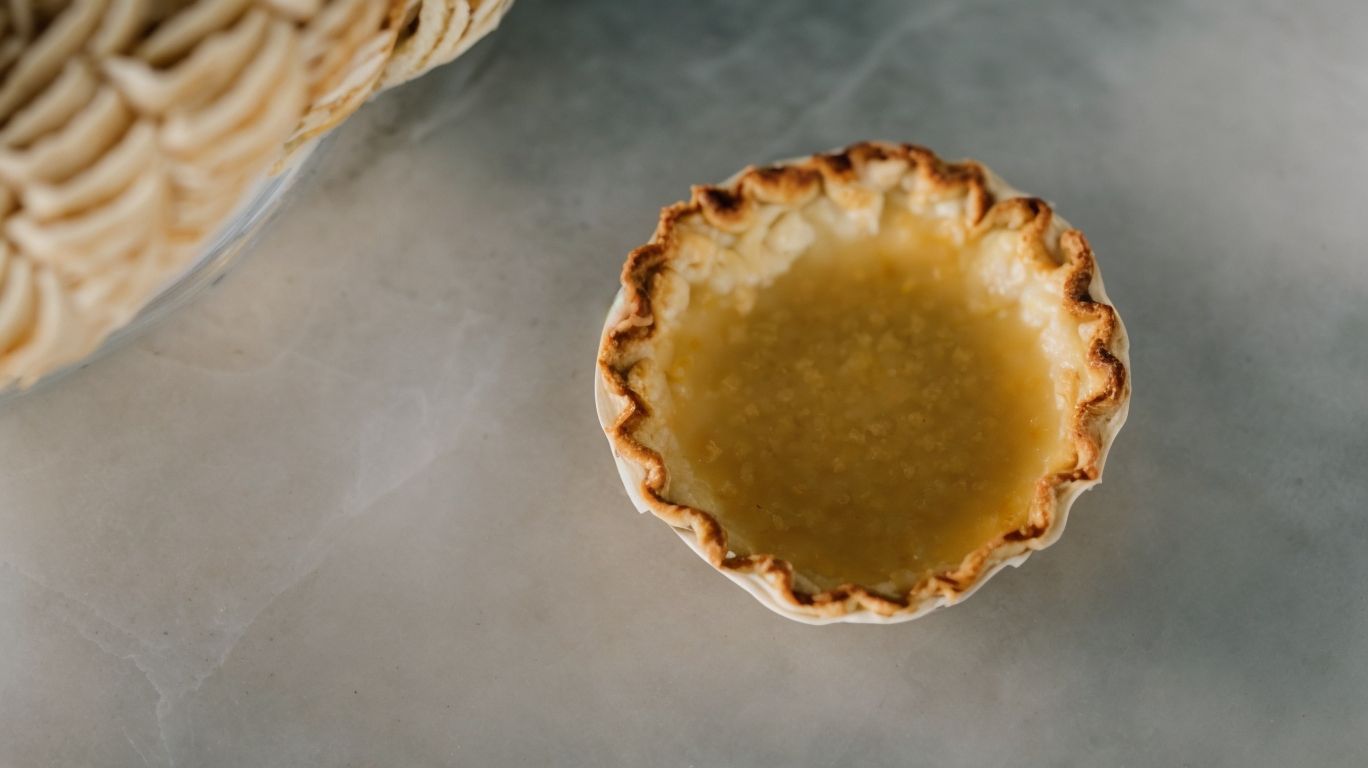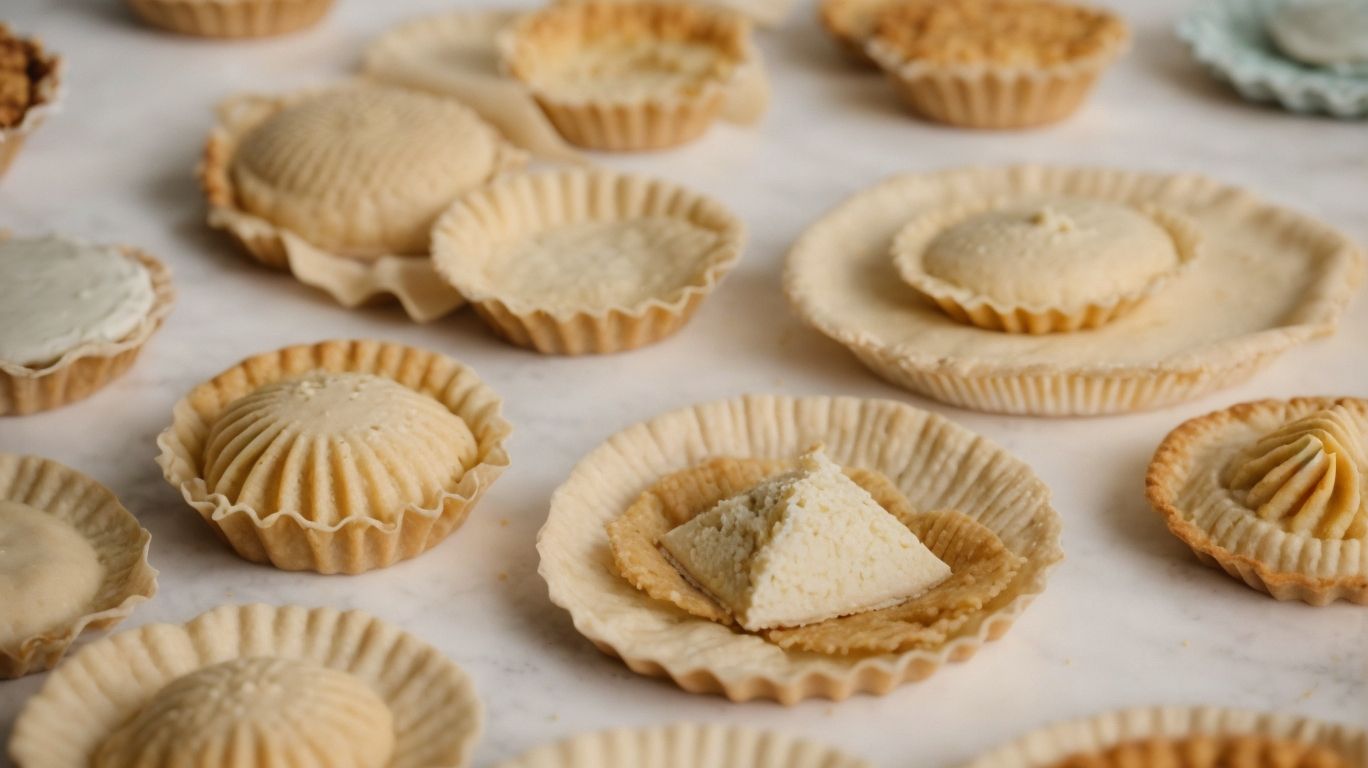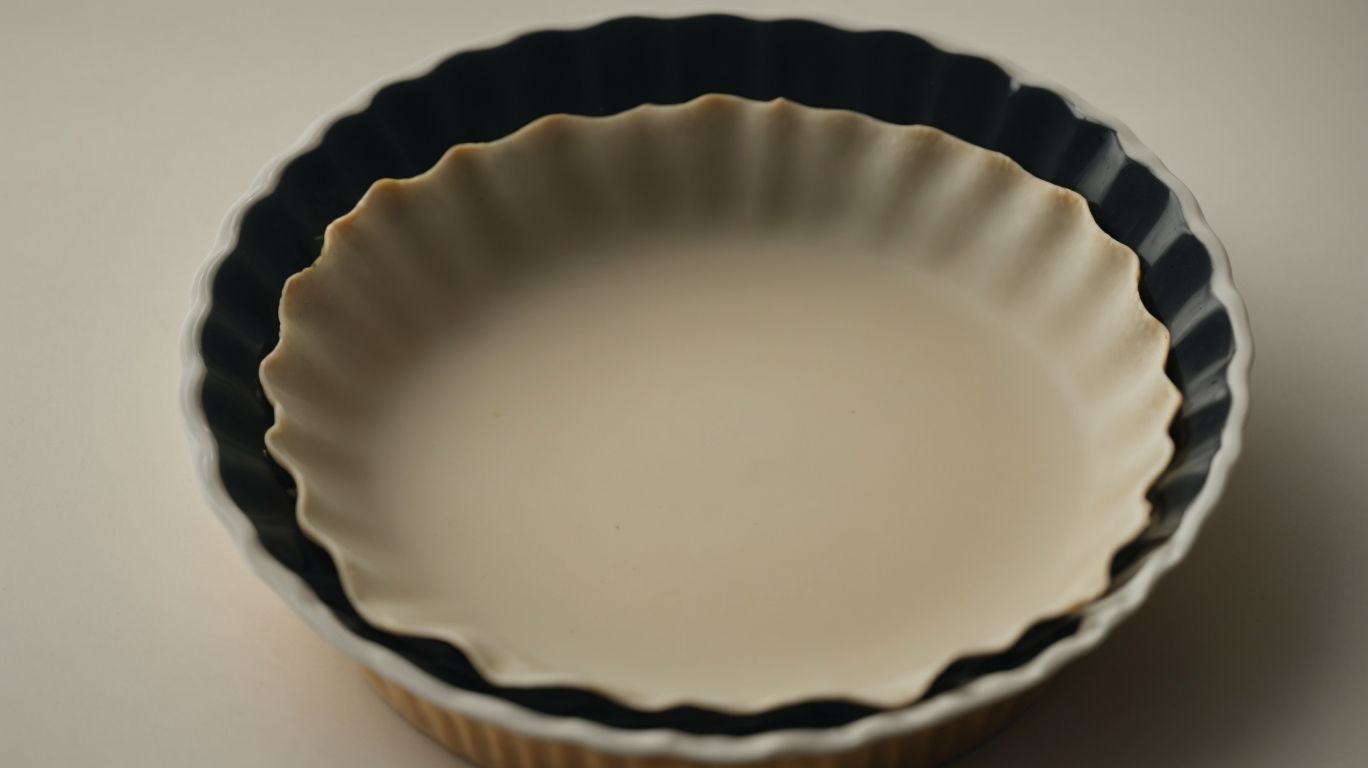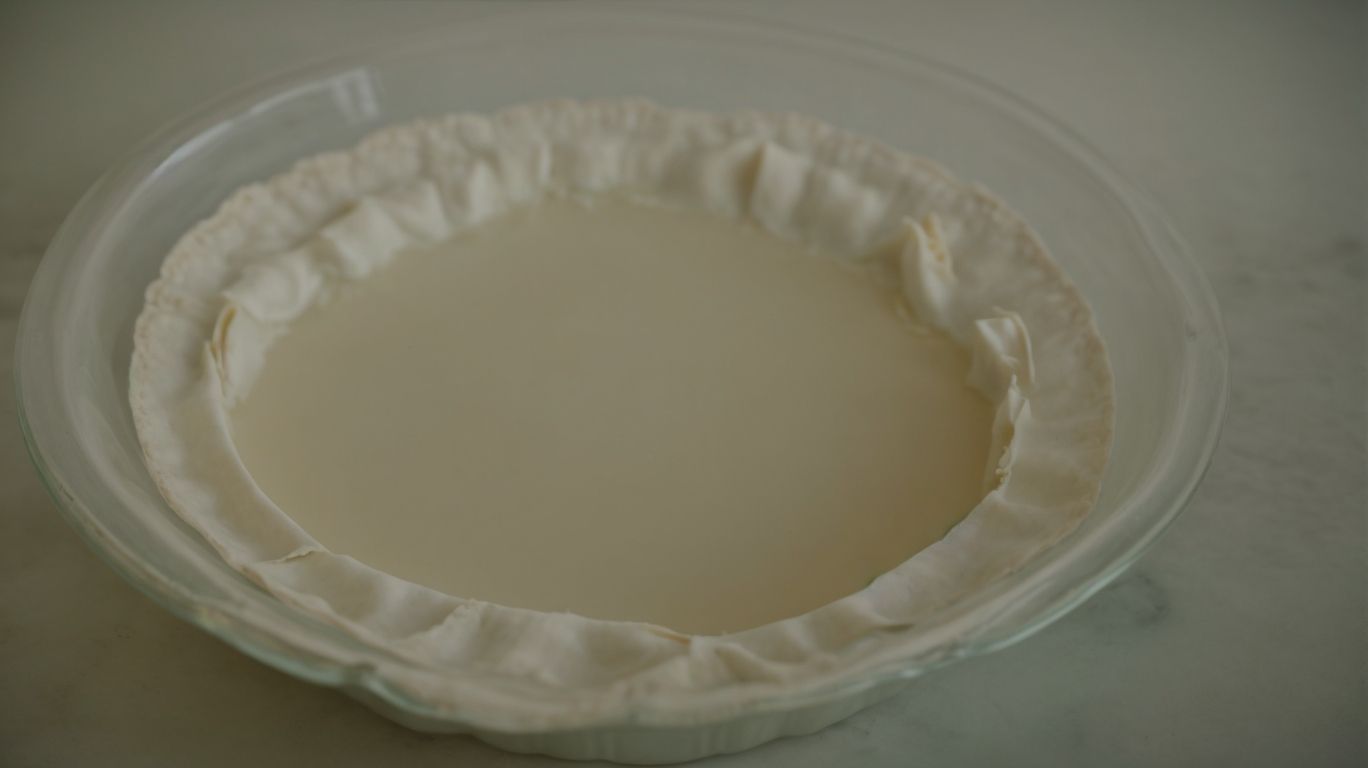How to Bake a Pie Shell Without Filling?
Welcome to “Poormet.com”, where we explore the art of creating the perfect pie shell.
In this article, we will dive into the world of pie shells, from understanding what they are and their ingredients to learning how to make and bake them without filling.
Join me, Chris Poormet, as we uncover the different types of pie shells and discover tips and tricks for achieving the perfect flaky crust.
Let’s get baking!
Key Takeaways:
About Chris Poormet and “Poormet.com”

Credits: Poormet.Com – Douglas Johnson
Chris Poormet, the proud owner of “Poormet.com,” has been recognized as the Culinary Blogger of the Year for his exceptional recipes and tips. With a background as a former chef excelling in food photography, Chris has garnered a devoted following on his blog.
Through his intricate knowledge of flavors, textures, and presentation, Chris’s recipes not only delight the taste buds but also captivate his audience visually. His background as a chef enables him to offer insightful tips and techniques that elevate home cooking to a professional level.
One of the unique aspects of Poormet.com is Chris’s emphasis on user engagement. He actively interacts with his readers, responding to comments, and even incorporating their feedback into his content, fostering a sense of community among his followers.
What is a Pie Shell?
A pie shell, often referred to as a pie crust, is the foundation of various delectable desserts such as pies and quiches. It serves as the vessel that holds the flavorful filling and provides structural support for the baked creation, defining the outer edges of the dessert.
The edges of a pie shell play a crucial role in sealing in the deliciousness of the filling, ensuring a perfect balance of textures and flavors in every bite. One important technique in pie-making is blind baking, where the crust is pre-baked before adding the filling to prevent sogginess and achieve a crisp base. This process involves lining the pastry with parchment paper or foil, filling it with weights like beans or pie weights to prevent shrinking, and then baking until lightly golden.
What Are the Ingredients for a Pie Shell?
The ingredients for a pie shell typically include pie dough made from a mixture of flour, butter, and water, ensuring a flaky and delicious base for various desserts. These components are often combined to create a homemade pie crust that imparts a unique flavor and texture to the final dish.
When crafting a pie shell, the quality of ingredients used is paramount. Using freshly milled flour adds a depth of flavor and an artisanal touch to the dough. Locally sourced butter brings richness and a creamy texture, elevating the overall taste. Water, while simple, plays a crucial role in binding the ingredients together, ensuring a cohesive and workable dough.
Homemade pie dough not only offers superior taste but also allows for customization. By adjusting the ratios of flour to fat or incorporating unique spices or herbs, you can tailor the crust to complement the filling and create a truly one-of-a-kind dessert.
How to Make a Pie Shell?
Creating a perfect pie shell involves a series of methodical steps and precise techniques to ensure a flawless result. Following detailed instructions and mastering the necessary techniques are key to producing a pie crust that is both visually appealing and structurally sound.
One essential factor in pie crust making is the temperature of ingredients; ensure your butter or shortening is cold to achieve that flaky texture.
Consistency is crucial when adding water; start with a small amount and gradually incorporate until the dough comes together. Overworking the dough can result in a tough shell, so handle it gently.
Remember to chill the dough before rolling it out to prevent shrinking during baking. Properly blind bake the crust by lining it with parchment paper and pie weights to maintain its shape.
Preparing the Dough
Preparing the dough for a pie shell involves combining flour, butter, and water in a food processor to create a cohesive mixture. Once the dough is formed, chilling it in the refrigerator is essential to ensure proper consistency and easy handling.
This chilling process not only allows the dough to relax but also helps to solidify the fats in the mixture, resulting in a flakier and more tender crust.
After the dough has been processed, it should be shaped into a disk, wrapped in plastic wrap, and refrigerated for at least 30 minutes, or ideally overnight, to enhance its flavor and texture.
Rolling out the Dough
Rolling out the pie dough on a parchment-lined surface is a crucial step in creating a perfect pie shell. The even thickness and smooth texture achieved through careful rolling contribute to the structural integrity and visual appeal of the final baked crust.
Using parchment paper not only prevents the dough from sticking to the rolling pin but also ensures that it can be easily transferred to the pie dish without tearing. Avoid adding too much flour during rolling as it can toughen the dough. Aim for a consistent thickness of about 1/8 inch to ensure even baking. Remember to rotate the dough periodically and lift and move it to prevent sticking, maintaining that desired smooth finish for your pie crust.
Shaping the Pie Shell
Shaping the pie shell involves carefully transferring the rolled-out dough to a pie dish and crimping the edges for a decorative finish.
Once the dough is gently placed into the pie dish, the edges are then crimped by pinching or using a fork to create a beautiful design that not only seals the pie but adds a touch of tradition to your creation.
Leftover dough should never go to waste. Consider rolling out the excess dough and cutting it into strips to create intricate lattice work on top of fruit pies or shaping it into decorative shapes like leaves or roses to embellish the edge of your pie.
What Are the Different Types of Pie Shells?

Credits: Poormet.Com – Randy Flores
Pie shells come in various types, each offering a unique texture and flavor profile. The Traditional Pie Shell, the Shortbread Pie Shell, and the Graham Cracker Pie Shell are among the popular options that cater to different taste preferences and recipe requirements.
The Traditional Pie Shell is the classic choice, known for its flaky and buttery characteristics that complement a range of fillings, from fruit to custard.
In contrast, the Shortbread Pie Shell offers a sweeter, crumbly base that pairs well with rich, creamy fillings like chocolate or caramel.
On the other hand, the Graham Cracker Pie Shell brings a hint of sweetness and a crunchy texture, ideal for cream pies or no-bake recipes.
Traditional Pie Shell
The Traditional Pie Shell is known for its signature flaky texture and golden brown appearance, making it a classic choice for various pie recipes. Its versatility and ability to complement both sweet and savory fillings have made it a favorite among home bakers and professional chefs alike.
This particular type of pastry shell, typically made from a combination of flour, fat, and water, is renowned for its texture that crumbles delicately with each bite. When baked to perfection, it acquires a crisp, golden exterior that adds a tempting visual appeal to any pie. The Traditional Pie Shell’s ability to provide a neutral base for a wide range of fillings allows it to satisfy a diverse palate, from fruit-filled desserts to hearty meat pies.
Shortbread Pie Shell
The Shortbread Pie Shell stands out for its subtle sweetness and crumbly texture, achieved through the addition of sugar and a specific preparation technique. This unique crust enhances the flavors of desserts like fruit pies and custard tarts, adding a delightful contrast to the fillings.
When using a Shortbread Pie Shell, the sugar content plays a crucial role in balancing the overall taste profile of the dessert. The sweetness of the crust complements the tanginess of fruit fillings and the creamy richness of custards, creating a harmonious blend of flavors. The crumbly texture of the shell provides a satisfying contrast to the smoothness of the fillings, adding a delightful mouthfeel to every bite. Whether you are baking a classic apple pie or a decadent chocolate tart, the Shortbread Pie Shell lends a touch of sophistication to your desserts.
Graham Cracker Pie Shell
The Graham Cracker Pie Shell offers a convenient and flavorful alternative to traditional pastry crusts, commonly found in store-bought versions. Its distinct taste and ease of use make it a popular choice for no-bake pies and chilled desserts, often paired with creamy fillings for a delightful treat.
These pre-made pie shells provide a time-saving solution for busy bakers, allowing them to focus on creating delicious fillings rather than spending time on crust preparation. The Graham Cracker Pie Shell adds a hint of sweetness and a satisfying crunch to complement a variety of dessert flavors. Whether you’re making a classic key lime pie or a decadent chocolate cream pie, this versatile crust harmonizes beautifully with different ingredients to enhance the overall dessert experience.
How to Bake a Pie Shell Without Filling?

Credits: Poormet.Com – Jerry Mitchell
Baking a pie shell without filling involves a process known as blind baking, where the crust is partially or fully baked before adding the filling. This technique requires the use of pie weights or alternatives to prevent the crust from puffing up or losing its shape during the initial baking phase.
Blind baking is crucial for certain types of pies, especially those with fillings that don’t require baking or have short baking times. By pre-baking the crust, you ensure that it holds its shape and texture when the filling is added later.
One common method of blind baking involves lining the uncooked pie crust with parchment paper or foil and then filling it with pie weights. These weights can be ceramic or metal beads, dried beans, or even rice. The purpose of the weights is to exert pressure on the crust, preventing it from rising or forming bubbles.
Some bakers prefer pricking the bottom of the dough with a fork before adding the weights to allow steam to escape, thus avoiding air pockets or uneven rising.
Preparing the Pie Shell for Baking
Before blind baking, preparing the pie shell involves lining it with foil or parchment to protect the crust during the initial baking process. This step is crucial for creating a sturdy base, especially when making quiches or pies with delicate fillings.
-
When using foil, make sure it completely covers the crust to shield it from direct heat exposure, preventing it from becoming overly brown or fragile.
-
If opting for parchment paper, gently press it against the dough, ensuring it adheres to the shape of the shell without leaving gaps, which could lead to uneven baking.
-
Properly lined, the foil or parchment acts as a barrier, maintaining the shape of the crust and preventing it from puffing up or shrinking during the initial baking phase.
Blind Baking the Pie Shell
Blind baking the pie shell involves partially or fully baking the crust without the filling, using specific techniques to achieve the desired texture and color. Applying an egg wash before baking can help create a golden-brown finish that enhances the overall appearance of the pie shell.
One key aspect of achieving a successful blind bake is properly weighting down the crust to prevent it from puffing up during the initial baking phase. This can be done by gently pressing parchment paper or aluminum foil onto the crust and filling it with pie weights or dried beans.
Furthermore, a crucial factor in blind baking is ensuring that the pie shell is properly sealed to prevent any leakage of the filling. This can be achieved by crimping the edges or using a fork to create a decorative border, maintaining the structural integrity of the crust.
Cooling and Storing the Pie Shell
After blind baking, cooling and storing the pie shell correctly are essential to maintain its integrity and prevent sogginess. Using proper cooling techniques and storing the crust in a pie dish or suitable container can help preserve its freshness and structural quality.
Allow the blind-baked pie shell to cool completely at room temperature before filling to avoid a steamed effect when adding moist fillings.
Once cooled, transfer the pie crust to a pie dish, ensuring it fits snugly to maintain its shape. This not only assists in preventing breakage but also helps in preserving the flaky texture.
For extended storage, cover the pie dish with plastic wrap or foil to shield the crust from absorbing excess moisture in the fridge. This storage method will keep the pie shell fresh and ready for filling whenever needed.
Tips and Tricks for Perfect Pie Shells
Achieving perfect pie shells involves mastering essential techniques and incorporating valuable tips from renowned experts like Stella Parks. These insights can significantly enhance the success rate of creating flawless pie crusts that are flaky, golden brown, and visually appealing.
One crucial tip to remember is to always keep your ingredients cold when making pie dough. Chilled butter and ice-cold water are key to achieving a tender and flaky crust. Using a combination of butter and shortening can help create a balance of flavor and texture. Another pro tip is to roll out the dough evenly and gently, ensuring a consistent thickness throughout. By blind baking the crust before filling, you can prevent a soggy bottom and achieve a crisp finish.
Frequently Asked Questions
What is the purpose of baking a pie shell without filling?
Baking a pie shell without filling serves multiple purposes, including creating a crispy and flaky crust, preventing the crust from getting soggy when filling is added, and allowing for a pre-baked crust for no-bake pies.
What ingredients do I need to bake a pie shell without filling?
The ingredients for a basic pie crust include flour, salt, cold butter or shortening, and cold water. However, you can also use pre-made pie crusts for convenience.
What tools do I need to bake a pie shell without filling?
You will need a rolling pin, pie dish, parchment paper, and pie weights or dried beans to prevent the crust from puffing up during baking.
How do I prepare the pie crust before baking?
Roll out the dough on a floured surface and carefully transfer it to the pie dish. Trim the edges and use a fork to create small holes in the bottom of the crust. Chill the crust in the refrigerator for at least 30 minutes before baking.
What is the recommended baking time and temperature for a pie shell without filling?
The recommended baking time for a pie shell without filling is 15-20 minutes at a temperature of 375°F. However, this may vary depending on the recipe and type of pie crust used.
Can I use a store-bought pie crust for baking a pie shell without filling?
Yes, you can use pre-made pie crusts for convenience. Just make sure to follow the package instructions for baking the crust without filling. Alternatively, you can also make your own pie crust using simple ingredients.

